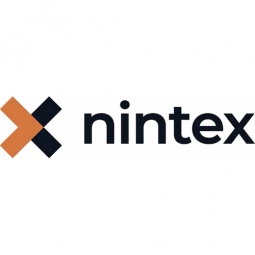技术
- 分析与建模 - 过程分析
- 网络安全和隐私 - 安全合规
适用行业
- 生命科学
- 药品
适用功能
- 物流运输
- 质量保证
用例
- 最后一英里交付
- 供应链可见性(SCV)
服务
- 系统集成
- 培训
关于客户
罗氏诊断公司是制药行业的世界领先者,致力于开发帮助患者延长寿命、改善生活的药物和诊断方法。该公司总部位于新加坡,是该地区发展最快的制药公司之一。随着制药行业不断变化、监管合规性不断变化以及行业颠覆,罗氏诊断始终在寻找实现运营现代化和精简的方法,以保持其在行业中的领先地位。
挑战
罗氏诊断作为新加坡发展最快的制药公司之一,由于其快速增长而面临着挑战。该公司需要对其流程进行数字化,以提高可视性和效率。这种增长带来了一系列适当扩展的挑战,公司需要灵活的解决方案,这些解决方案能够随着公司快节奏的发展而发展,并为诊断领域的重要研究和进步扫清道路。罗氏寻求业务流程合理化、最终用户效率、移动集成、更好的流程合规性和可见性。该公司正在处理大量的文书工作,需要一个解决方案来简化其运营。
解决方案
罗氏诊断公司求助于 K2 Software 来实现整个组织的工作流程现代化并简化。使用 Nintex K2 Five,罗氏将简单的旅行请求自动化到复杂的流程,例如每年 60,000 个货物交付请求。 Renevey 和他的团队构建了 Nintex K2 Five 工作流应用程序,适用于从旅行请求和培训批准等简单流程到复杂、长时间运行的流程等各种情况。凭借 20 多个提供端到端流程管理的工作流程,罗氏在日常运营方面取得了巨大的进步。自动化帮助该公司缩短了周转时间,并通过端到端流程监督提高了可追溯性。
运营影响
数量效益

Case Study missing?
Start adding your own!
Register with your work email and create a new case study profile for your business.
相关案例.

Case Study
Case Study: Pfizer
Pfizer’s high-performance computing software and systems for worldwide research and development support large-scale data analysis, research projects, clinical analytics, and modeling. Pfizer’s computing services are used across the spectrum of research and development efforts, from the deep biological understanding of disease to the design of safe, efficacious therapeutic agents.

Case Study
Fusion Middleware Integration on Cloud for Pharma Major
Customer wanted a real-time, seamless, cloud based integration between the existing on premise and cloud based application using SOA technology on Oracle Fusion Middleware Platform, a Contingent Worker Solution to collect, track, manage and report information for on-boarding, maintenance and off-boarding of contingent workers using a streamlined and Integrated business process, and streamlining of integration to the back-end systems and multiple SaaS applications.

Case Study
Process Control System Support
In many automated production facilities, changes are made to SIMATIC PCS 7 projects on a daily basis, with individual processes often optimised by multiple workers due to shift changes. Documentation is key here, as this keeps workers informed about why a change was made. Furthermore, SIMATIC PCS 7 installations are generally used in locations where documentation is required for audits and certification. The ability to track changes between two software projects is not only an invaluable aid during shift changes, but also when searching for errors or optimising a PCS 7 installation. Every change made to the system is labour-intensive and time-consuming. Moreover, there is also the risk that errors may occur. If a change is saved in the project, then the old version is lost unless a backup copy was created in advance. If no backup was created, it will no longer be possible to return to the previous state if and when programming errors occur. Each backup denotes a version used by the SIMATIC PCS 7 system to operate an installation. To correctly interpret a version, information is required on WHO changed WHAT, WHERE, WHEN and WHY: - Who created the version/who is responsible for the version? - Who released the version? - What was changed in the version i.e. in which block or module of the SIMATIC PCS 7 installation were the changes made? - When was the version created? Is this the latest version or is there a more recent version? - Why were the changes made to the version? If they are part of a regular maintenance cycle, then is the aim to fix an error or to improve production processes? - Is this particular version also the version currently being used in production? The fact that SIMATIC PCS 7 projects use extremely large quantities of data complicates the situation even further, and it can take a long time to load and save information as a result. Without a sustainable strategy for operating a SIMATIC PCS 7 installation, searching for the right software version can become extremely time-consuming and the installation may run inefficiently as a result.

Case Study
ELI LILLY ADOPTS MICROMEDIA’S ALERT NOTIFICATION SYSTEM
Pharmaceutical production is subject to a strict set of enforced rules that must be adhered to and compliance to these standards is critically necessary. Due to the efforts of WIN 911’s strategic partner Micromedia, Lilly was able to adopt an alarm notification infrastructure that integrated smoothly with their existing workflows and emergency hardware and protocols. These raw energy sources enable the industrial process to function: electricity, WIN-911 Software | 4020 South Industrial Drive, Suite 120 | Austin, TX 78744 USA industrial steam, iced water, air mixtures of varying quality. Refrigeration towers, boilers and wastewater are monitored by ALERT. Eli Lilly identified 15000 potential variables, but limitations compelled them to chisel the variable list down to 300. This allowed all major alarms to be covered including pressure, discharge, quantity of waste water discharged,temperature, carbon dioxide content, oxygen & sulphur content, and the water’s pH.









